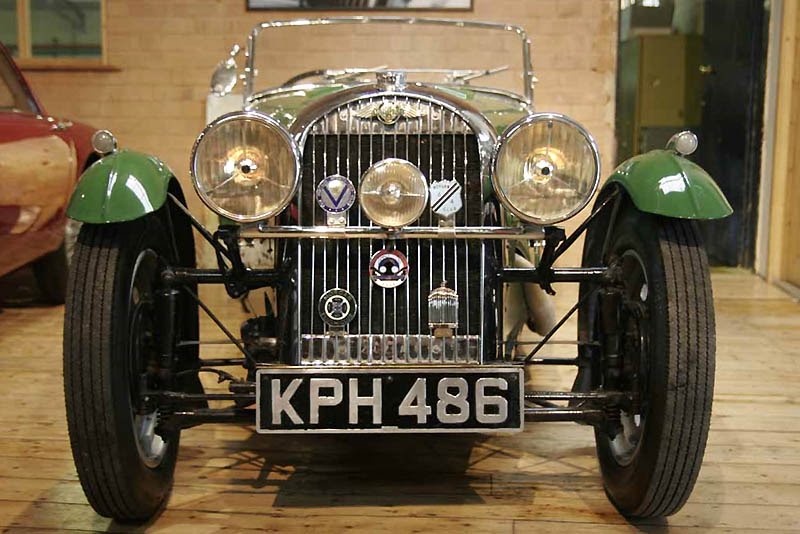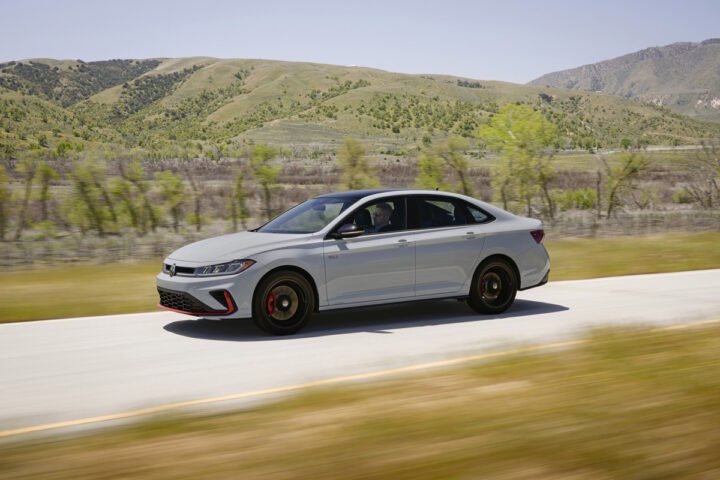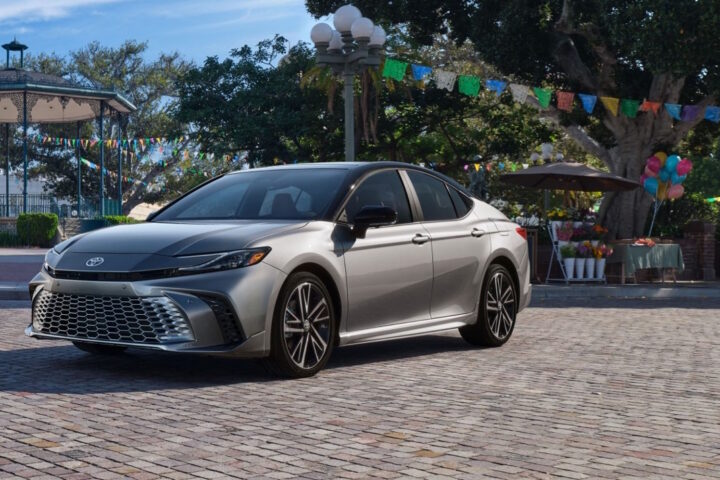The man who guided the destinies of the Morgan car for almost fifty years, H.F.S. Morgan, was born at Morton Jeffries Rectory, Herefordshire in 1881. His father was the Reverend Prebendary H G Morgan at Stoke Lacy and he married Ruth, the daughter of the late Reverend Archibald Day, formally vicar of St Matthias, Malvern Link.
H.F.S., as his loyal workers and personal friends knew him, was educated at Stone House, Broadstairs, Marlborough College, and The Crystal Palace Engineering College. He began his career as the 18-year-old pupil of William Dean, Chief Engineer of the GWR Railway Works at Swindon, where he worked as a draughtsman in the drawing office for seven years.
After a hair-raising first drive in a 3 _ h.p. Benz that ran away with him down the 1-in-6 gradient of a hill between Bromyard and Hereford, he emerged intact but considerably poorer. Damages to the car cost about £28 for repairs and delayed his ambition of owning his own car.
He left the GWR in 1906 and at the age of 25 opened a garage and motor works in Malvern Link where he ran a most successful bus service with a special 10 hp Wolseley 15 seater. These ran from Malvern Link to the Wells and later from Malvern to Gloucester. He also became the district agent for Wolseley and Darraq.
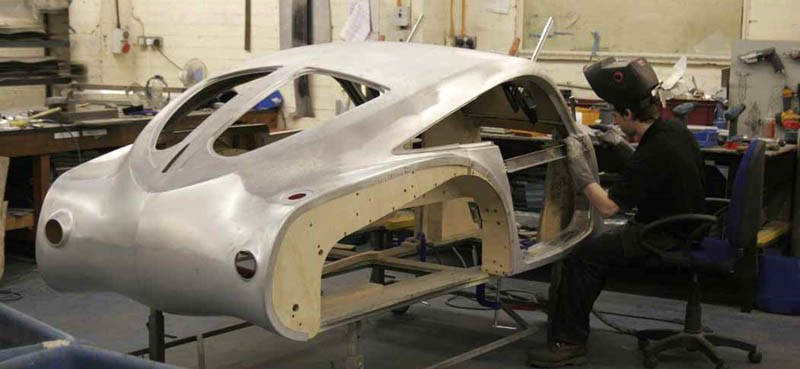
Eventually, he could afford to purchase a motor vehicle an Eagle Tandem. Previously he had hired his cars including the ill-fated Benz, from a Mr. Marriot, the first motor trader in Hereford. The Eagle was a three-wheeler fitted with an 8 h.p. water-cooled De Dion engine and it was from his experiences with this machine and a 7 hp two-cylinder car called “The Little Star” that he had the idea of making his own three-wheeler.
He bought a seven hp Twin-cylinder Peugeot engine and mounted it into a light Three-wheeled tubular chassis. The first Morgan Runabout had been born!
With very little facility for machine work in his garage, help was gratefully received from Mr. Stephenson Peach, then Engineering master at Malvern and Repton Colleges and the grandson of the designer of the “Rocket”.
The first design was successful due to its rigid frame, lightweight and independent front suspension. Another important factor was the unusual power to weight ratio of 90 brake horsepower per ton, which enabled this little vehicle to accelerate as fast as any car being produced at that time.
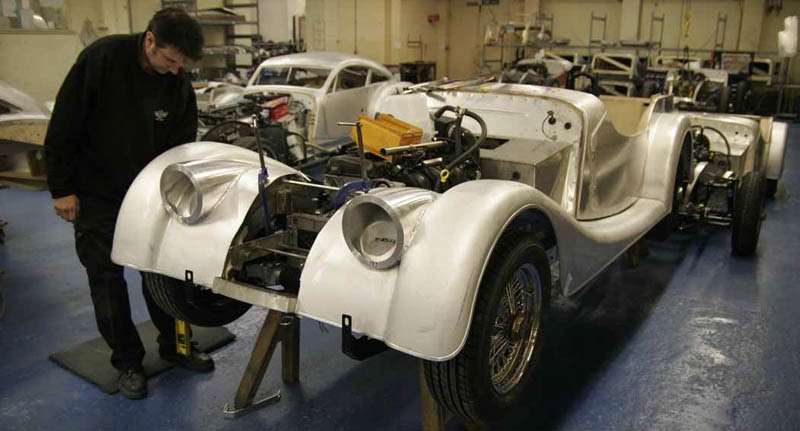
Initially, there was no intention of marketing the vehicle. Only after much favorable comment was the decision made to build a few. With capital for some machine tools and an extension to the Malvern Garage provided by his father the rector, H.F. S. Morgan began manufacture in 1910. A patent was granted, the patent drawings being produced by a bright youth who was later to become famous as Sir John Black of the Standard Motor Company.
The Morgan name made its very first public appearance at the Olympia Motor Show in 1910. Two three-wheelers, both single-seaters fitted respectively with 8 hp Twin and 4 hp Single cylinder J.A.P. engines, secured some orders, but it soon became apparent that for the vehicles to be universally popular they would have to become two-seaters.
It was whilst the two-seater version was in preparation that H.F.S Morgan entered his single-seater in the London-Exeter-London Reliability Trial, gaining a gold medal, the highest possible award. The first two-seaters made their appearance at the 1911 Olympia Show. They were fitted with 8 h.p. engines. They attracted the interest of the managing director of Harrods, Mr. Burbridge, and as a result, the car appeared in the shop window of the famous store, the only car ever to have done so.
At the 1911 Show, the orders received were so many more than Mr. Morgan could cope with at Malvern that he approached several large manufacturers to make cars for him. It was fortunate that they turned him down and with the help of deposits on orders he was able to purchase more machine tools and make further extensions to his garage.
The Morgan Motor Company was formed as a private Limited Company in 1912 with the Reverend H.G. Morgan as Chairman and his son as Managing Director. The site of the first factory was on the Worcester road leading into Great Malvern. H.F.S. and his wife Ruth lived next door in a small terraced house.
During this period the Morgan name was heard for the very first time in racing circles when a Mr. Henry Martin easily won an International Cyclecar Race at Brooklands. In 1912 H.F.S. Morgan broke the 1100 cc. One-hour Record traveling at a fraction short of 60 mph for one hour at Brooklands. His father the Prebendary H.G Morgan was present and this is probably the only time a top hat has ever been worn at the popular circuit.

From the start, it was very much a family business, and Mr. H.F.S Morgan’s sister, Miss Dorothy Morgan, was a regular entrant in reliability trials, gaining many first-class awards in a Morgan three-wheeler. In 1913 a Morgan made the fastest time at the celebrated Shelsey Walsh Hill Climb at an average speed of 22 mph. And at the end of the year, the Morgan Runabout had gained a greater number of awards for reliability and speed than any other Cyclecar or Light Car.
At this time, a Morgan three-wheeler seating two people could be bought for 85 guineas, and one of them entered the Cyclecar Club’s “Fuel Consumption Trial” and won the event with an average consumption of 69.4 mpg.
In 1913 the company produced some racing cars with longer chassis and lower seating with o.h.v. J.A.P. engines. One of them was entered in the French Grand Prix at Amiens and won against strong opposition from many continental four-wheelers. This in spite of an enforced stop to change an inner tube in one of the front tires!
The driver of the car, Mr. McMinnies was the editor of the “Cyclecar” and his success gave Morgan a great deal of publicity. After the event he christened his particular car “jabberwocky of Picardy”, but the car became officially known as the “Grand Prix” and one contemporary owner, Captain Ball, the First World War flying ace, said to drive this car was the nearest thing to flying on the ground.
After the outstanding success of 1913, it was unfortunate that in 1914 the Morgan was excluded from the RAC Lightcar and Cyclecar Trial because it had only three wheels instead of four. This was a portent too significant to go unnoticed, A four-wheeler was designed to be fitted with a Diorman four-cylinder engine but the model never went into production. It was to be twenty-two years before the first four-wheeler was introduced.
The evolution of the Morgan with a model of family dimensions (designed in 1912) came in 1915 when a four-seater was produced for Mr. Morgan and his family. After the Great War, this model was marketed as the Family Runabout and sold in large numbers.
The demand for inexpensive transport was great and a new factory was built at Pickersleigh Road to enable production to reach fifty cars a week. This made Morgan one of the largest British car producers at the time.
Situated on the Madresfield estate, the new factory was opened in 1918 and H.F.S. Morgan’s daughter, Sylvia laid the cornerstone. This is now the site of the present factory, which has traditionally been known as the “Works”.
Mr. George Goodall joined the firm in 1925, taking over the position of General Manager from Mr A Hales who had been with H.F.S since 1911. George went on to become Managing Director of the Company, a position from which he retired at the end of 1958 whilst still retaining a seat on the Board.
Source: Morgan Motor Company
Photos credit and copyright: Mark Obstfeld for The Morgan Motor Company

